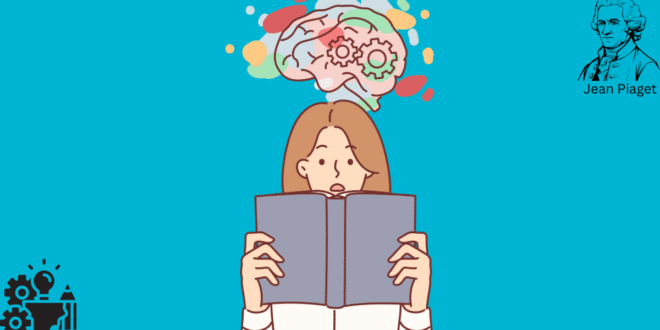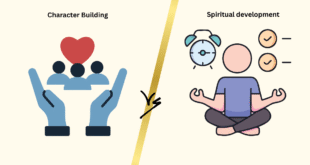Dr. Muhammad Younus Khalid- Tarbiyah Parenting Coach, Counsellor and consultant
Education is more than transmitting information; it is about shaping hearts, minds, and character. In the Muslim context, education (taʿlīm and tarbīyah) has always aimed at forming well-rounded individuals who not only know, but also embody faith, ethics, and wisdom. Modern psychological theories, when integrated thoughtfully, can enrich Islamic education by helping educators understand how children grow cognitively and what methods best suit each stage of their development.
One of the most influential psychologists in this regard is Jean Piaget, whose theory of cognitive development offers deep insights into how children think, understand, and learn at different ages. In this article, we explore Piaget’s theory in detail, its stages, its strengths and limitations, and then examine how Islamic education principles align with Piaget’s insights, and how they can be combined to better serve Muslim children.
Who Was Jean Piaget?
Jean Piaget (1896-1980) was a Swiss psychologist, epistemologist, and educational theorist. His work fundamentally changed how we think about children’s minds. Before Piaget, many people assumed children think like mini adults, just with less experience. Piaget’s research showed that children’s thinking evolves in patterns, in stages, and that at different ages the way children conceptualize things (space, time, causation, morality) changes profoundly.
Piaget’s central idea: children are active learners. They don’t simply absorb information; they construct knowledge by interacting with the world. Through experience, reflection, and interaction, they reorganize their mental frameworks (schemas). Key processes in this construction are assimilation, accommodation, and equilibration.
Piaget’s Four Stages of Cognitive Development
Piaget identified four major developmental stages. While the exact ages may vary, the sequence and the characteristics of each stage have been confirmed by many subsequent studies.
| Stage | Approximate Age | Key Characteristics |
| Sensorimotor Stage | Birth to ~2 years | Infants learn through senses and actions. Object permanence develops (understanding that things still exist even when out of sight). Basic cause-and-effect via trial and error. |
| Preoperational Stage | ~2 to ~7 years | Symbolic thinking emerges (language, make-believe); strong egocentrism (difficulty seeing others’ perspective); struggles with logical reasoning; focus on concrete, perceptual features. (Simply Psychology) |
| Concrete Operational Stage | ~7 to ~11 years | Logical thinking emerges but mostly about concrete, tangible objects. Understands conservation (quantity, number, volume remain same despite changes in shape), can classify, order, decenter (consider multiple aspects). |
| Formal Operational Stage | ~11 years onward | Abstract, hypothetical, and deductive reasoning. Can think about possibilities, future, moral, philosophical ideas. Can plan systematically. |
Key Concepts in Piaget’s Theory
- Schemas: Mental structures or frameworks that organize knowledge, ideas, and what children know. Schemas change over time as children interact with the world.
- Assimilation: Incorporating new experiences into existing schemas without changing them drastically. E.g. a child who knows “dog” might call all four-legged animals “dog.” (Verywell Health)
- Accommodation: Changing schemas or creating new ones when old ones don’t fit new experiences. E.g. the child learns that a cat is different from a dog and revises the category of “dog.”
- Equilibration: The process of balancing assimilation and accommodation to reach a stable understanding. When encounters new info that conflicts with old schemas, child feels disequilibrium, then adapts until equilibrium is restored. (Simply Psychology)
Strengths and Criticisms of Piaget’s Theory
Strengths
- Stage theory gives a structured way to see how cognitive abilities emerge. Educators can tailor teaching to the child’s stage.
- Emphasis on active learning, exploration, experimentation aligns with best practices in modern pedagogy.
- Highlights that children are not simply “mini adults” — their way of thinking is fundamentally different at younger ages.
Criticisms and Limitations
- Rigid age boundaries: Not every child moves through the stages exactly at those ages. Individual differences (temperament, culture, environment) can accelerate or delay transitions. (journal.eltaorganization.org)
- Underestimating social and cultural factors: Piaget focused more on individual interaction with environment than on how culture, language, social interaction influence cognitive development. More recent theories (Vygotsky, etc.) stress social context much more. (journal.eltaorganization.org)
- Sometimes underestimates abilities of young children under certain experimental conditions. Some studies show earlier understanding of object permanence, etc. (Verywell Health)
Principles of Islamic Education
To understand relevance, we need to outline key principles of Islamic education (taʿlīm and tarbīyah). Drawing from the Qur’an, Sunnah, classical scholarship, and modern Islamic educational theory:
- Knowledge (‘Ilm) as a duty and right: Seeking knowledge is obligatory; Allah elevated those who know. The Prophet ﷺ said, “…seeking knowledge is an obligation upon every Muslim.”
- Holistic development: Islam speaks of development not only of the intellect but of character, spirituality, morality, physical strength, social responsibility. The human being is multi-dimensional.
- Fitrah (innate disposition): Humans are born with a nature predisposed toward worship of Allah, recognition of truth. Education nurtures this fitrah.
- Tarbiyah with adab (etiquette), akhlaq (morals), and ‘ibadah (worship): Education is not just academic but ethical, spiritual.
- Learner-centeredness and gradual progression: Education tailored to the learner’s age, capacity, stage of development. Prophet ﷺ taught in ways appropriate to people’s understanding.
- Use of wisdom, example, story, reflection: Classical methods—narration of stories (Qur’an, Seerah), parables, analogy, example (uswah) along with reasoning (‘aql).
- Strong intention (niyyah), sincerity (ikhlas), and linking to akhirah (Hereafter): Motivations in Islamic education are not merely worldly success but pleasing Allah, afterlife.
Piaget’s Theory & Islamic Education: Points of Convergence
When we compare Piaget’s cognitive development theory with Islamic educational principles, several major points of alignment emerge. These convergences offer useful guidance for educators, curriculum designers, parents, and Islamic schools.
| Point of Convergence | Explanation / Implication |
| Age-appropriate instruction | Piaget’s stages show that at different ages children think differently; Islamic education also teaches that lessons should be suited to one’s ‘aql (reasoning) capacity, maturity, and understanding. This supports a methodology where teachings (of aqidah, fiqh, moral) are introduced gradually. |
| Active learning & experiential methods | Piaget emphasizes that children build knowledge through exploring, manipulating, testing. Similarly, Islamic education uses stories (Qur’an, Seerah), examples, and reflection (tadabbur) rather than rote only, so children internalize rather than memorise without understanding. |
| Moral, social, physical dimensions | Piaget’s cognitive growth is connected to sociability, perspective taking, understanding justice etc. Islamic education likewise stresses akhlaq, compassion, brotherhood, social responsibility. As children mature cognitively, they are more able to understand moral reasoning and justice, which Islamic education values. |
| Importance of environment | Piaget shows that children’s cognitive structures are formed through interactions with their surroundings. Islamic education highlights the environment—home, mosque, school, community—as essential in shaping behavior, values, identity. |
| Development of reasoning (‘aql) and reflection | At formal operational stage, children can think abstractly, hypothetically. Islamic teachings encourage reflection, reasoning, use of intellect, especially in mature stages to understand deeper meanings of Qur’an, aqidah, ethics. |
Practical Applications: How to Adapt Piaget in Islamic Education Settings
To make this theory actionable, here are concrete suggestions for Islamic schools, parents, and educators on implementing Piaget’s insights together with Islamic education values.
In Early Years (0-2, Sensorimotor Stage)
- Use sensory-rich Islamic content: soft recitation of Qur’an, nasheed, touching the Musḥaf, labels of Allah’s names, etc.
- Use modeling: children imitate parents in acts of worship, manners. Because infants learn by observing.
- Create environments with safe physical interaction: playing, movement, exploring, so they form schemas about order, causality (e.g., cause & effect in simple puzzles).
- Begin very simple etiquettes: “Bismillah”, “Salāmu ‘alaykum”, removing shoes, etc., so these become part of schema even before full comprehension.
Pre-Operational Stage (~2-7 years)
- Use stories from Qur’an and Seerah with imagination, pictures, drama. Symbolism helps: stories of prophets, angels.
- Encourage play that reflects Islamic values: pretend play about mosque, charity, helping neighbors.
- Beware of over-reliance on rote memorization before concept comprehension: ensure meaning is conveyed in simple terms.
- Use repetition, simple analogies, sensory visual aids. Use role models so children see moral behavior.
Concrete Operational Stage (~7-11 years)
- Introduce concepts of justice, fairness, honesty in more structured discussions. Use real life scenarios from Islamic teachings: how Prophet ﷺ treated people, etc.
- Teach conservation, classification etc., by using Islamic content: classify good deeds vs obligations vs optional, categorize types of worship, etc.
- Encourage group work, peer discussions, Islamic project work (charity, community service) so children see multiple perspectives.
- Use balancing of rules: show how fiqh works, why certain rules exist, their wisdom (hikmah), so cognitive development supports religious understanding rather than blind following.
Formal Operational Stage (≈11+ years)
- Introduce more abstract topics: concept of justice in Islam, ethics, the hereafter, eschatology, philosophy of tawḥīd, challenges of modernity.
- Use debates, reflective writing, comparisons, critical thinking about issues (always within Islamic framework), so students can apply reasoning.
- Encourage students to read Tafsir, usul al-fiqh etc., with guidance. Ask them to think about “why” behind rulings, stories, verses.
- Support identity formation: who I am as Muslim, how to live in plural societies, moral challenges, etc.
Integrating Islamic Educational Theory & Piaget: A Framework for Curriculum Design
To successfully blend Piaget’s developmental theory with Islamic educational aims, educators should consider designing curricula and pedagogy around the following framework:
- Assessment of developmental stage
Before designing a curriculum or lesson, determine the cognitive stage(s) of learners. Use age, but also observe behavior: ability to think abstractly, perspective taking, logic, etc. - Content selection aligned with both age and Islamic values
Select Qur’an, Seerah, ethical content appropriate to students’ capacity. Avoid introducing complex doctrines without foundational reasoning. - Pedagogical strategies
- Use stories, analogies, visual aids for young children.
- Use hands-on projects, community work for older children.
- Encourage interaction, discussion, reflection.
- Use questioning: not just “what” but “why”, “how”, “what if”.
- Include memorization but always with meaning and understanding.
- Teacher training & role modeling
Teachers must understand Piaget’s stages and Islamic educational goals. They should also model behavior, serve as exemplars of akhlaq, and guide reasoning. Their understanding of child psychology is critical. - Environment & community involvement
Learning shouldn’t be confined to classroom. Home environment, mosque, community events all contribute. For example, social responsibilities, charity, intergenerational interactions help students see faith in action. - Periodic reflection and feedback
Include mechanisms for students to reflect on what they’ve learned (intellectually and spiritually), and for educators to get feedback on what methods are effective. Adjust accordingly.
Potential Challenges & How to Mitigate Them
Combining modern psychological theory with Islamic education is promising, but there are challenges. Here are some common ones and suggestions:
| Challenge | Mitigation |
| Rigid adherence to age boundaries | Recognize individual variation. Some children mature faster or slower. Use flexible grouping and differentiated instruction. |
| Cultural mismatch | Be sensitive to local culture. While Piaget’s research was mostly Western and European, many findings are universal—but specific examples, stories must resonate culturally. |
| Overemphasis on cognition at expense of spirituality | Keep balance: religious education must nurture heart (qalb), spirituality, intention (niyyah), not just head-knowledge. Include worship, dhikr, moral behavior, compassion. |
| Lack of teacher preparation | Invest in professional development: teacher education programs must include child development, psychology, Islamic theory. |
Case Study / Example
To illustrate how this integration might play out in a real setting, here is a hypothetical curriculum module for an Islamic primary school (grades 1-5), showing how Piaget’s stages map to Islamic teachings.
| Grade | Approx. Age | Stage | Key Learning Objectives | Teaching Methods |
| Grade 1 (6-7 yrs) | 6-7 | Early Concrete Operational | Understand the stories of prophets as examples; recognize basic moral values like honesty, kindness; know that Allah commands justice. | Storytelling (Qur’an, Seerah), role play (acting kindness), group work, visual arts, simple science experiments showing fairness (e.g., sharing) |
| Grade 3 (8-9 yrs) | 8-9 | Concrete Operational | Deepen understanding of Islamic obligations vs optional acts; understand reasoning behind daily prayers, zakat, fasting; begin discussing fairness, justice in society. | Discussion, group activities, field trips (e.g., helping at charity), comparing real life scenarios with Islamic examples, using classification (e.g., categorizing good deeds) |
| Grade 5 (10-11 yrs) | 10-11 | Late Concrete to Early Formal | Introduction to abstract concepts: tawḥīd, accountability, hereafter (akhirah); explore moral dilemmas; think about service, responsibility. | Debates, reflective writing, projects (community service), guided reading of Tafsir and hadith, mentorship, peer teaching |
Conclusion
Jean Piaget’s theory of cognitive development provides valuable insights into how children think, learn, and mature. Islamic education, with its rich heritage and comprehensive aims, stands to benefit greatly by aligning its methods with cognitive principles. When educators understand Piaget’s stages, use learner-appropriate methods, and remain rooted in Islamic values (qur’an, sunnah, akhlaq, sincerity), they can nurture Muslims who are intellectually sound, morally upright, spiritually aware, and socially responsible.
The future of Islamic education lies in this integration: respecting both the timeless principles of our Deen and the scientific understanding of human development. By doing so, we ensure that our children do not just know Islam but understand it deeply, live it wisely, and contribute to society meaningfully.
 Edutarbiyah English Blog of Parenting and Tarbiyah
Edutarbiyah English Blog of Parenting and Tarbiyah



